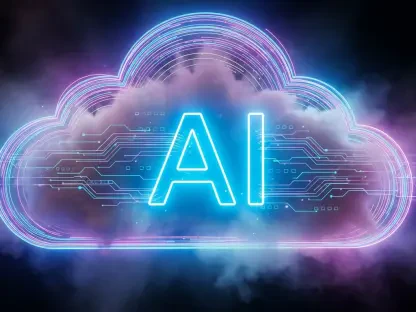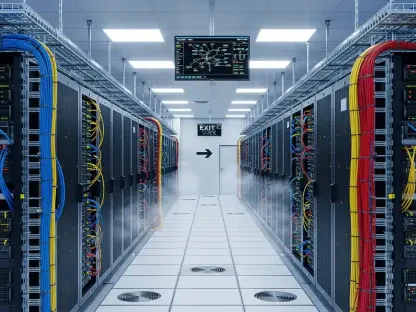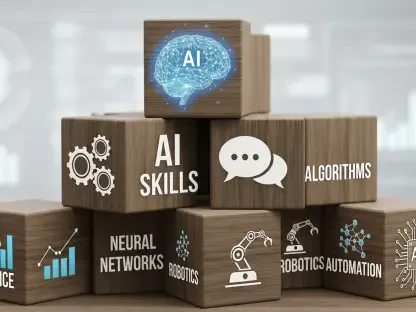In a world where software development races against ever-tightening deadlines, artificial intelligence has emerged as a game-changer, with a staggering 84% of developers now using or planning to adopt AI tools in their coding practices, according to Stack Overflow’s latest Developer Survey. Picture a bustling tech hub where lines of code are generated in seconds, not hours, by algorithms that learn and adapt. Yet, beneath this efficiency lies a pressing question: at what cost does this speed come? This exploration delves into the transformative power of AI in the IT industry, uncovering both the unprecedented opportunities it offers and the hidden risks that demand attention.
The significance of this shift cannot be overstated. As digital transformation accelerates, the integration of AI in coding is not merely a trend but a fundamental reshaping of how software is built and delivered. IT firms face mounting pressure to innovate rapidly while maintaining quality, making AI tools indispensable allies. However, the potential for security flaws and ethical dilemmas looms large, necessitating a careful balance. This discussion aims to unpack the dual nature of AI in coding, providing clarity on its impact and guiding stakeholders through the challenges ahead.
The AI Revolution in Coding: Are Developers Prepared?
AI tools have stormed into the IT sector, altering traditional coding landscapes at a breathtaking pace. With adoption rates soaring, these technologies are no longer experimental but integral to daily workflows. Developers are increasingly reliant on generative AI to streamline tasks, yet many question whether the industry is truly equipped to handle this seismic change. The rapid uptake signals a paradigm shift, but readiness remains a critical concern.
This transformation challenges long-standing notions of what it means to code. Where programming was once a deeply manual craft, AI now automates significant portions, from debugging to syntax generation. Such advancements promise efficiency, but they also raise doubts about skill erosion and over-dependence. The tension between innovation and preparedness sets the stage for a deeper look into AI’s role.
Why AI Coding Is Critical in Today’s IT Environment
The demand for faster software delivery in a fiercely competitive digital era has propelled AI coding into the spotlight. Businesses are under constant pressure to roll out applications and updates at breakneck speed, often with limited resources. Generative AI tools have become a lifeline, enabling teams to meet aggressive timelines without sacrificing scope or ambition.
Client expectations add another layer of complexity, as stakeholders now demand not only speed but also impeccable quality and minimal errors. IT companies must navigate these high stakes, where a single bug can derail a project or damage trust. AI’s ability to enhance output aligns directly with these needs, positioning it as a cornerstone of modern development strategies.
Moreover, industry trends reflect a clear pivot toward AI proficiency over traditional expertise. A Nash Squared survey reveals that 65% of digital leaders prioritize developers with AI skills, even if they lack extensive experience. This shift underscores a broader cultural change, where adaptability to AI tools often trumps conventional qualifications, reshaping hiring and training priorities across the sector.
The Double-Edged Sword of AI in Software Development
AI’s impact on productivity is undeniable, slashing development timelines and automating mundane tasks with remarkable precision. Platforms like Publicis Sapient’s Slingshot have demonstrated this power, doubling productivity per feature team and cutting software lifecycles by 40-50%. Such efficiency gains allow developers to focus on creative problem-solving rather than repetitive grunt work.
Beyond speed, AI contributes to superior code quality and tangible client benefits. By minimizing bugs and enhancing system reliability, these tools ensure more stable products, as evidenced by Publicis Sapient’s reports of fewer critical defects through AI-assisted reviews. For clients, this translates to faster market entry and improved support, with firms like Thrive leveraging AI for instant query resolution, elevating user satisfaction.
However, the technology is not without flaws, carrying significant risks in security and accountability. Vulnerabilities in AI-generated code persist, often exposing systems to exploits, while privacy concerns around data usage remain unresolved. Early skepticism, voiced by experts like Saarthak Jain of Abnormal AI, highlights the need for rigorous checks. Without proper safeguards, the rush to adopt AI could invite costly oversights, demanding a cautious approach.
Perspectives from the Industry: Real-World AI Coding Insights
Expert voices shed light on the nuanced reality of AI in coding, offering a blend of enthusiasm and caution. Frankie Woodhead of Thrive emphasizes how AI empowers senior engineers to refine code efficiently, tackling boilerplate tasks with ease. Yet, there’s an underlying acknowledgment that human judgment remains essential to validate outputs and maintain standards.
Industry observations further enrich the narrative, with Publicis Sapient noting a marked reduction in critical bugs thanks to AI-driven reviews. Gregor Stewart of SentinelOne reinforces the importance of oversight, arguing that machines, much like humans, are prone to error and require constant monitoring. These insights paint a picture of cautious optimism, where AI’s value is recognized but not taken for granted.
Developer sentiments, drawn from recent surveys, add a human dimension to this technological wave. Many express excitement over AI’s potential to lighten workloads, yet there’s a palpable concern about losing control over intricate projects. This mix of hope and hesitation reflects a broader industry struggle to integrate AI without compromising the craft of coding, highlighting the need for balance.
Strategies for Effective AI Integration in IT Teams
Navigating the complexities of AI adoption calls for practical frameworks, such as the “human-in-the-loop” model. This approach, adopted by companies like Thrive, mandates peer reviews and automated security tools to catch vulnerabilities early. By embedding human oversight into processes, teams can harness AI’s strengths while minimizing exposure to its weaknesses.
Creating a culture of learning is equally vital, as suggested by Zoe Cunningham of Softwire, who views AI as a growth tool rather than a shortcut. Tailored policies that address specific client needs ensure that AI usage aligns with project goals. Such an environment encourages experimentation but keeps accountability at the forefront, preventing over-reliance on automated solutions.
Continuous training and mentoring, as practiced by SentinelOne, form another pillar of responsible AI integration. Equipping developers with the knowledge to use these tools effectively fosters innovation without sacrificing reliability. By investing in education, IT teams can strike a harmony between embracing cutting-edge technology and upholding rigorous standards, ensuring sustainable progress.
Looking back, the journey of AI in coding reveals a landscape of immense promise tempered by significant hurdles. Reflecting on the insights shared, it becomes clear that success hinges on deliberate strategies and vigilance. For the future, IT leaders must prioritize robust training programs to empower teams, while developers should advocate for policies that embed oversight into every AI-driven process. Establishing industry-wide benchmarks for security in AI-generated code could further safeguard against risks. As the technology continues to evolve, a commitment to balancing its benefits with proactive risk management will define the next chapter of software development.









